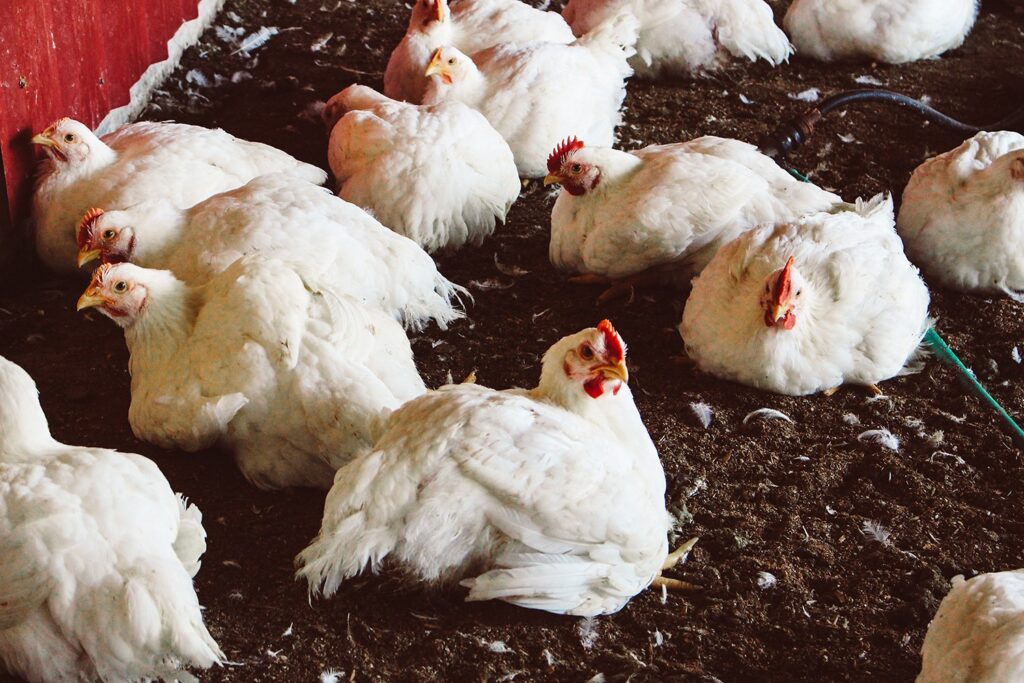
Bird flu has infected backyard and industrial chicken operations across the state and country. (Courtesy of the Oregon Department of Agriculture)
Oregon has the unlucky distinction of becoming the first state in the country with a confirmed case of avian flu in a pig, and since the beginning of the year, reports have surfaced about avian flu in backyard flocks and commercial sites across Oregon, including a case involving a worker at outbreak in a Clackamas County industrial poultry operation just last week.
Our fragile, consolidated factory farm system has created the perfect conditions for avian flu to flourish in Oregon and beyond. To protect our food, health and resiliency, we need our legislators to seize the opportunity in the upcoming session to prioritize policies that finally rein in factory farms.
For decades, our elected officials have enabled massive food sector consolidation – leaving ever larger industrial farms vulnerable to the spread of disease. In Oregon, many of our corporate chicken farms are located in Marion and Clackamas counties. A Food & Water Watch analysis of the most recent federal Agriculture Census data found that in Clackamas County, a single egg-laying hen operation confines an estimated 1 million hens annually.
Industrial farms are the perfect environment for pathogens like avian flu to spread, due to high-density animal confinement. Operations often cram together hundreds of thousands of animals, allowing pathogens to spread quickly. To make matters worse, the selective breeding of livestock for profitability has resulted in essentially genetically identical flocks and herds, amplifying the severity of these outbreaks. It’s no surprise that this strain of avian flu has jumped from wild animals to commercial farms, and to humans – potentially posing a particular threat to farmworkers and the rural communities who live in close proximity to these industrial operations.
Furthermore, because our food supply is concentrated in just a few massive factory farms — nationally, three-quarters of all U.S. egg-laying hens are raised on just 347 industrial farms — shocks ripple quickly throughout the supply chain and can lead to drastic measures like “depopulating” entire flocks. Even a single outbreak can be devastating. Just last year, the Oregon Department of Agriculture reported outbreaks at two industrialized broiler chicken operations in Marion and Linn counties, leading to the slaughter of more than 750,000 birds.
These outbreaks can also be devastating for Oregon’s independent farms. Large corporations typically control processing, distribution and pricing, allowing them to leverage these events to inflate consumer prices and profiteer off market fluctuations. Inevitably, smaller farms absorb the financial stress. This highlights how the threat of zoonotic diseases further exacerbates the inequalities between corporate agribusiness and family farmers struggling to compete.
We didn’t get here by mistake. Federal and state policies have systematically traded the resiliency of diversified independent farms for the perils of concentrated animal confinement. And all of this is on top of the other documented public health threats of factory farms to the air, water and health of nearby communities.
The current bird flu outbreak confirms what we’ve always known: Our highly consolidated corporate factory farm system is much less resilient than a regionalized, diversified, sustainable food and farming network.
Oregon legislators have the opportunity to get in front of this avian flu crisis and use the upcoming legislative session to introduce and pass laws that finally tackle industrial farms at the source. We need our legislators to be bold in doing so, and first and foremost, invest in resilient, local food systems that would protect Oregonians who are currently living near the polluting factory farm status-quo, and very much living in harm’s way.
GET THE MORNING HEADLINES.

